 Your new post is loading...
 Your new post is loading...

|
Scooped by
Jean-Michel Ané
May 11, 5:48 PM
|
• Uneven-aged mixed forest management markedly increase soil aggregate stability (SSA).
• Microbial diversity and network complexity stimulate GRSP secretion and HS formation.
• GRSP and HS components plays a vital role in regulating the SSA.

|
Scooped by
Jean-Michel Ané
May 11, 5:44 PM
|
Drought and alkaline stresses inhibit the symbiosis between soybean and rhizobia; however, the spatial distribution of metabolites within nodules under these stresses remains unknown. To address this gap, we used mass spectrometry imaging (MSI) to analyze metabolic alterations in different nodule regions under drought and alkaline stresses. A total of 3456 metabolites were detected in nodules and substances whose spatial distribution was altered by drought or alkaline stress were screened. Interestingly, the spatial distribution of the two most abundant isoflavones in soybean, malonyldaidzin and malonylgenistin, which serve as precursors for rhizobia-communication signaling molecules, was also affected by stresses. Spatial transcriptomic data revealed that the cortical-specific expression pattern of GmMaT2 (isoflavone malonyltransferase) matched the metabolite distribution. Further analysis identified GmbZIP59 as a transcriptional activator of GmMaT2, whose expression decreased under stress conditions. These results demonstrate that drought and alkaline stresses disrupt the spatial organization of flavonoid metabolism in nodules, potentially affecting symbiotic nitrogen fixation. Our findings provide new insights into the metabolic adaptation mechanisms of soybean nodules under abiotic stress.

|
Scooped by
Jean-Michel Ané
May 9, 1:25 PM
|
Most plants extend their zone of interaction with surrounding soils and plants via mycorrhizal hyphae, which in some cases can form common mycorrhizal networks with hyphal continuity to other radial plants. These interactions can impact plant health and ecosystem function, yet the role of these radial plants in mycorrhizal interactions and subsequent plant performance remains underexplored. Here we investigated the influence of hyphal exploration and interaction with neighbouring mycorrhizal and non-mycorrhizal plants on the performance of Plantago lanceolata, a mycotrophic perennial herb common to many European grasslands, using mesh cores and the manipulation of neighbouring plant communities. Allowing growth of hyphae beyond the mesh core increased carbon capture above-ground and release below-ground as root exudates and resulted in the greater accumulation of elements relevant to plant health in P. lanceolata. However, contrary to expectations, the presence of mycorrhizal or non-mycorrhizal neighbours did not significantly alter the benefits of hyphal networks to P. lanceolata. Our findings demonstrate that enabling the development of a fungal network beyond the immediate host rhizosphere significantly influences plant leaf elemental stoichiometry, enhances plant carbon capture, and increases the amount of carbon they release via their roots as exudates.

|
Scooped by
Jean-Michel Ané
May 9, 10:46 AM
|
NIN-like proteins (NLPs) play crucial roles in NO3- signaling pathway, however, knowledge of NLPs in woody plants remains limited. A total of 13 NLP genes were identified in each haplotype of 717 poplar. All NLPs contained the PB1 and RWPRK domains. Eight and nine duplicated gene pairs were detected for PtNLPs and PaNLPs, respectively. Promoter analysis of NLP genes in 717 poplar revealed the existence of many cis-elements of light and stress responses. The NLP genes exhibited distinct expression profiles across different tissues. For instance, NLP1-NLP3 were nearly undetectable in leaves but highly accumulated in roots. The response of NLP genes to NO3- availability also showed complex patterns: NLP1, NLP3, NLP5, NLP10 and NLP11, were induced by high NO₃⁻ availability in roots, but NLP6, NLP12 and NLP13 genes were inhibited by high NO3- conditions in both roots and leaves. Additionally, a protein interaction network centered around poplar NLP proteins was constructed, highlighting their potential roles in carbon and nitrogen (N) metabolism. These findings underscore the potential roles for poplar NLP genes in NO3- signaling and stress adaptation and lay a foundation for stimulating N use efficiency (NUE) in woody plants.

|
Scooped by
Jean-Michel Ané
May 9, 10:16 AM
|
Interactions between organisms, such as those between plants and microbes, require extensive signaling between and within each organism to detect and recognize the partner and elicit an appropriate response. Multiple families of small signaling peptides regulate plant interactions with beneficial or pathogenic microbes, and sometimes both. Some of these signaling peptides transmit information between different cells or organs of the host and allow plants to orchestrate a coordinated response towards microbial mutualists or pathogens. However, not only plants produce signaling peptides required for the interactions. Microbes themselves also secrete peptide signals, which are detected by host receptors and required for infection. Among these are microbial peptides mimicking those of plants, allowing mutualistic or pathogenic microbes to hijack endogenous plant signaling pathways and evade the host immune system. In this review, we provide a comprehensive summary of current knowledge on host- and microbe-derived signaling peptides and their cognate receptors regulating mutualistic and parasitic plant-microbe interactions. Furthermore, we describe how microbes hijack endogenous host signaling pathways, and discuss possible crosstalk between the plant signaling pathways controlling mutualism with those modulating immune responses to pathogens.

|
Scooped by
Jean-Michel Ané
May 9, 10:06 AM
|
Ectomycorrhiza (ECM) is a symbiotic relationship between fungi and plants, which is essential for many woody plants. ECM fungi have evolved independently multiple times in several lineages from saprotrophic ancestors. However, the origin and diversification processes of ECM lineages are still not well understood. In Paper I, we addressed whether ECM lineages evolved independently or if reversals to saprotrophy occurred. These hypotheses were tested using model-based methods and a phylogeny based on 2 174 ECM taxa. We concluded that our inferences about ECM evolution are affected by whether a rate shift in different time periods or ECM clades is allowed, and that reversals to saprotrophy are probably rare. In Paper II, I investigated whether the ECM-linked genomic changes occurred abruptly at the transition to the ECM lifestyle or were part of a trend before or after the transition in ECM lineages. I compared 26 genomes from ECM species in Inocybaceae with six saprotrophic outgroups. The findings suggest that the molecular changes, important for transition to the ECM lifestyle, occur in proximity to the origin of this lifestyle in Inocybaceae. In Paper III, I explored whether genomic diversity in ECM lineages is shaped by independent transitions or due to diversification within each lineage. I compiled a phylogenetically diverse dataset of 75 genomes, representing eight ECM lineages. The findings show that while genomic diversity from lineage-level additions quickly saturates for all enzyme groups investigated, species-level additions continue to contribute new diversity beyond the limits of our dataset. In Paper IV, we tested the mutual exclusivity of psilocybin and muscarine in Inocybaceae species by screening 21 samples. I also explored the origin and evolution of genes involved in psilocybin production in these species using 24 genomes. We detected both psilocybin and muscarine, for the first time, in a single species of Inocybaceae and also concluded that the psilocybin gene cluster has evolved through convergent evolution, with two possible origins of the gene cluster within the family. Overall, this thesis contributes to improving our understanding of ECM fungal evolution and highlights how traits that appear alike can emerge through distinct evolutionary processes.

|
Scooped by
Jean-Michel Ané
May 8, 11:45 AM
|
The application of synthetic nitrogen (N) fertilizer to cropping systems leads to reactive N pollution including nitrous oxide (N2O) emissions. Nitrous oxide is an ozone-depleting substance and an important long-lived greenhouse gas. Potential mitigation solutions, including bacterial inoculants (BI) and enhanced efficiency fertilizers (EEF), have been proposed to reduce reactive N pollution. Nitrogen-fixing BIs supply the crop with N so that less synthetic N fertilizer must be added to maintain agricultural crop productivity. Enhanced efficiency fertilizers include controlled-release fertilizers and inhibitors to reduce N2O emissions and N leaching. Here, we examined the efficacy of using a nitrogen-fixing BI to lower N2O emissions over seven growing seasons across a broad range of fertilizer rates (FR). Further, we examined the efficacy of using a dual-inhibitor EEF to lower N2O emissions over four growing seasons and assessed if warmer soil temperature treatments (+ 2°C) reduced the EEF mitigation potential for climate change.
The results indicated that the BI treatment effect alone did not have any significant effects on any of the environmental variables tested (e.g. N2O emissions, soil N concentrations, crop yield). Increasing FR increased cumulative N2O emissions, enhanced soil N concentrations, and decreased N use efficiency. Fertilizer rate had a polynomial relationship with leachate N, crop yield, and grain N. The interaction between FR and the BI treatment was significant for decreasing soil nitrate (NO3-) concentrations. This result indicated that soil NO3- concentrations increased at a faster rate per FR without a BI than when treated with a BI. Finally, N2O emissions increased linearly (0.012 kg N2O-N ha-1 per kg N ha-1 applied) with increasing FR from 81 to 404 kg N ha-1.
The EEF experiments indicated that the growing season and temperature interaction effect was significant on cumulative N2O emissions and emission factors. The growing season effect was significant for most of the environmental variables that were tested. The conventional urea had significantly higher values of initial total soil N concentrations compared to the EEF. The conventional urea treatments and the effects of climate warming (i.e. heated soil temperatures) when using the EEF led to significantly less leachate N mass loss than the unheated EEF treatments. Additionally, the conventional urea treatments had lower leachate N concentrations than the unheated EEF treatments. The heated EEF and conventional urea treatments also had significantly lower plant N concentrations compared to the unheated EEF treatments. The results imply that there was better plant N acquisition in lower soil temperatures across growing seasons and between temperature treatments.
Fertilizer rate had the dominant effect on cumulative N2O emissions, soil N concentrations, N use efficiency, crop yield, leachate N loss, and grain N uptake when compared to the effect of BIs. Soil warming has potential to reduce leachate N mass loss and plant N uptake. Using EEFs rather than conventional urea has potential to enhance leachate N loss as well as increase plant N uptake from improved synchronization between crop N demand and supply. Overall, N cycling was highly dependent on the mixed effects of FR, N source, and climate.

|
Scooped by
Jean-Michel Ané
May 7, 9:52 AM
|
Legume roots secure nitrogen by forming a symbiosis with soil rhizobia but remain resistant to pathogenic bacteria1-4. How this tolerance to rhizobia is achieved without compromising plant immunity is largely unknown. Here, we identify the cytoplasmic kinase MtLICK1/2, which interacts with nodulation factor receptor MtLYK3 to drive symbiotic signaling and suppress plant immunity. Rhizobial infection and nodule development are defective in Mtlick1/2, phenocopying the Mtlyk3-1 mutant. MtLICK1/2 and MtLYK3 undergo reciprocal trans-phosphorylation during rhizobial symbiosis. Phosphorylated MtLYK3 activates the receptor-like kinase MtDMI2 to stimulate symbiotic signaling. MtLICK1/2 is activated in the rhizobia infection area to suppress plant immunity. Thus, MtLICK1/2 and MtLYK3 together amplify symbiotic signaling and dampen host immunity to enable legume-rhizobium symbiosis.

|
Scooped by
Jean-Michel Ané
May 6, 11:23 AM
|
The heterologous synthesis of a nitrogen-fixing system in a non-diazotrophic organism is a long-sought-after goal because of the crucial importance of nitrogenase for agronomy, energy, and the environment. Here, we report the heterologous synthesis of a two-component nitrogenase analog from Azotobacter vinelandii, which consists of the reductase component (NifH) and the cofactor maturase (NifEN), in Escherichia coli. Metal, electron paramagnetic resonance, and activity analyses verify the cluster composition and functional competence of the heterologously expressed NifH and NifEN. Nuclear magnetic resonance, nanoscale secondary ion mass spectrometry, and growth experiments further illustrate the ability of the NifH/NifEN system to reduce N2 and incorporate the reduced N into the cellular mass. These results establish NifEN/NifH as a simplified nitrogenase analog that could be optimized and engineered to facilitate transgenic expression and biotechnological adaptations of this important metalloenzyme.

|
Scooped by
Jean-Michel Ané
May 5, 12:35 PM
|
Organic compost offers an environment for plant growth that is free from pests, undesirable microbes and weeds: ideal conditions for organic farming management. However, this environment generally lacks symbiotic soil fungi, such as arbuscular mycorrhizal fungi (AMF), and the mycorrhizal benefits of AMF. In this study, we aim to explore the impacts of inoculation of arbuscular mycorrhizal Acaulospora cf. morrowiae on tomato plant growth from the seedling stage to harvest and on the fungal microbiomes of organic substrates. The effects of AMF inoculation on tomato seedling growth were investigated in a sand mixture and an organic compost. Moreover, the effects on plant growth, yield and fungal communities of AMF inoculation in combination with vermicompost supplementation were elucidated using ITS2-amplicon sequencing at the flower to fruit development stage and harvest stage. A. cf. morrowiae did not colonize roots of five-week-old tomato seedlings grown in vermicompost and cocopeat. The fungus initiated hyphal colonization in 25% of tomato roots at the flower–fruit development stages in organic compost. The AMF successfully established a symbiosis with abundant arbuscules at the harvest stages. Thus, in fertile organic substrates, A. cf. morrowiae did not promote plant growth and yield but shaped endophytic and substrate fungal communities. The establishment of AMF symbiosis between A. cf. morrowiae and tomato is delayed in fertile organic substrates. AMF association did not promote growth and yield but altered fungal communities in tomato roots.

|
Scooped by
Jean-Michel Ané
May 5, 12:24 PM
|
The SRS/STY transcription factors from the model legumes: Lotus japonicus and Medicago truncatula, are part of regulatory networks that play relevant roles for nodule development during the N-fixing symbiosis with rhizobia. In this work we analyzed the participation of the PvSRS transcription factors from common bean (Phaseolus vulgaris), a most important legume crop, in the symbiosis with Rhizobium etli. Our phylogenetic analysis of SRS TFs across five plant species, including four legumes and Arabidopsis thaliana, identified clades that group SRS proteins that are highly expressed in legume nodules and in Arabidopsis roots. A qRT-PCR expression analysis of the 10 PvSRS in root/nodule of inoculated plants, revealed that all the PvSRS genes are expressed at different stages of the symbiosis, albeit at different levels. Based on what is known for L. japonicus, we demonstrated that the PvSRS10 gene -with highest expression during symbiosis- is transcriptionally activated by NF-Y transcription factor, thus indicating its participation in the NIN-NF-Y regulatory cascade. Based on our previous work about the relevant role of members from the MADS-domain/AGL transcription factors as regulators of the N-fixing symbiosis, in this work we demonstrated the transcriptional regulation of PvSRS10 by the MADS-TF PvFUL-like. Analysis of protein-protein interaction networks predicted thatPvSRS5 and PvSRS6 interact with proteins involved in transcriptional regulation and the auxin-activated signaling pathway. The regulatory mechanisms of PvSRS TF in common bean symbiosis may be related to auxin biosynthesis regulation, that is essential for determinate nodules development. Our study highlights the role of PvSRS TF in the N-/fixing symbiosis, a relevant process for sustainable agriculture.

|
Scooped by
Jean-Michel Ané
May 4, 12:10 PM
|
Global losses of agricultural products from water scarcity could be greater than from all other causes combined. Water deficiency in plants can result from insufficient precipitation, elevated air temperatures, and other factors that reduce the water available in the soil. Most terrestrial plants are able to form symbiosis with arbuscular mycorrhizal fungi. Arbuscular mycorrhiza plays a key role in the mineral nutrition of many terrestrial plant species. Water transport in plants is regulated primarily by aquaporins, transmembrane proteins. Aquaporins help plants save water, which is an important component of the plant’s adaptation strategy to water scarcity. Some studies suggest that arbuscular mycorrhizal fungi can decrease the expression of aquaporin genes in plants under drought conditions, which reduces water transport within host plant tissues and conserves available water. On the other hand, there is little scientific evidence of the interaction mechanisms between plants and arbuscular mycorrhizal fungi during aquaporin regulation. In addition, the information in different sources on the aquaporin functions in different plant species may be contradictory. Plant aquaporins are represented by several subfamilies; their number varies for different species. A more comprehensive study of these transporters can enhance our understanding of water transport in plants and assess how arbuscular mycorrhizal fungi can influence it. This review contains data on the history of studies of the structure, localization, phylogeny, and functions of aquaporins.

|
Scooped by
Jean-Michel Ané
May 4, 12:06 PM
|
The ecological restoration of mining regions presents significant scientific challenges, particularly concerning poor soil structure and the difficulty of retaining water and nutrients. Dark septate endophytes (DSE) are known to improve soil structure and promote plant growth, yet the precise mechanisms which they operate remain inadequately understood. In this study, extracellular polymeric substances (EPS) were extracted from the metabolites of the DSE (Alternaria sp. 17463) to evaluate their synergistic impact on plant growth when applied as a soil amendment in conjunction with the DSE strain. The application of 0.25% EPS increased soil water retention by 11.02% and stimulated root development by enhancing soil enzyme activity, overall soil metabolism, and nutrient availability. Particularly, the alterations in enzyme activities and nutrient availability within small macro-aggregates were crucial in supporting alfalfa growth. The combined effect of DSE and EPS significantly enhanced soil structure and alfalfa root development, resulting in a remarkable 4.04-fold increase in total biomass. Therefore, these findings provided a theoretical basis for the large-scale application of ecological restoration and microbial technologies.
|

|
Scooped by
Jean-Michel Ané
May 11, 5:47 PM
|
Arbuscular mycorrhizal fungi are key components of the soil microbiota and are characterized by their symbiosis with terrestrial plants. In addition to providing nutrients to plants during symbiosis, arbuscular mycorrhizal fungi can enhance plant defenses against herbivorous insects and pathogens, including induced systemic resistance. Previous studies have demonstrated that Spodoptera frugiperda (J. E. Smith) (Lepidoptera: Noctuidae) larvae perform better in maize plants colonized by arbuscular mycorrhizal fungi, which generally exhibit greater growth and higher nitrogen and phosphorus contents. However, these studies were limited to a small number of maize varieties. Additionally, prior research has not considered the host preference of S. frugiperda females for noncolonized versus arbuscular mycorrhizal fungi-colonized maize plants, although female choice can significantly influence progeny performance. In this study, we evaluated the effects of Rhizophagus irregularis (Blaszk, Wubet, Renker, & Buscot) C. Walker & A. Schüßler (Glomerales: Glomeraceae) inoculation on 4 maize inbred lines (CML 124, CML 343, CML 122, and CML 126) susceptible to S. frugiperda on female oviposition preference and larval performance of S. frugiperda. Overall, females preferred ovipositing on uncolonized seedlings to arbuscular mycorrhizal fungi-colonized seedlings, independent of the inbred lines. Larval performance was affected by inbred lines and arbuscular mycorrhizal fungi colonization. Larvae feeding on noncolonized maize seedlings exhibited significantly higher weights than those feeding on arbuscular mycorrhizal fungi-colonized seedlings. Among the inbred lines, larvae fed CML 122 performed better than those fed CML 126 and CML 343 seedlings. The weight of the larvae fed on CML 124 seedlings was similar to that of the larvae fed on CML 122, CML 126, and CML 343 seedlings.

|
Scooped by
Jean-Michel Ané
May 10, 8:36 AM
|
Background Utilizating the plant endophytic microbiomes to enhance pathogen resistance in crop production is an emerging alternative method to chemical pesticides. However, research on the composition and role of microbial communities related to perennial fruit plants, such as the strawberry, is...

|
Scooped by
Jean-Michel Ané
May 9, 12:20 PM
|
Strigolactones (SLs) function as both hormones within plants and signaling molecules in the rhizosphere, interacting with mycorrhizal fungi and certain weeds. While SLs are known to regulate plant growth and development, their role in interactions with harmful microbes, such as fungi, remains poorly understood. This review explores how SL-based approaches could transform pest and disease management by promoting soil health, with SLs influencing microbial populations depending on their type, profile, and concentration in different plant species. We also address how factors like plant morphology, root structure, environmental conditions, and soil types shape SL-microbe interactions. A deeper understanding of SL biosynthesis pathways across plant species could provide insights into their impact on microbial communities and plant resilience. Key to advancing research is understanding SL signaling pathways, including downstream components and physiological mechanisms, which could be elucidated using techniques like CRISPR/Cas9. These tools offer the potential to explore the genetic basis of SL effects on plant-microbe interactions. Additionally, pure SLs, rather than racemic mixtures, are crucial for studying their specific effects, as isomers of SLs can trigger different signaling pathways. This paper highlights the influence of SLs on plant germination and growth through their interactions with microbes and suggests that SL-based technologies could offer sustainable solutions for enhancing plant health and managing soil ecosystems.

|
Scooped by
Jean-Michel Ané
May 9, 10:35 AM
|
Whatever continent you are on (besides Antarctica), whatever type of vegetation you are in, and however that vegetation has been disturbed and modified by humans, there will very likely be a legume growing nearby. Leguminosae or Fabaceae, commonly known as legumes, with ∼22,500 species is the third largest family of flowering plants, after the daisies (Asteraceae) and orchids (Orchidaceae). A central question in legume biology is understanding why the family is so diverse, geographically widespread and abundant, and how legumes came to form significant components of almost all terrestrial ecosystems across the globe. Economically, legumes are also important as major world food crops, and have been so since the dawn of agriculture. The ability to fix atmospheric nitrogen through root nodule symbiosis with bacteria — the hallmark of many legumes — is important in both ecosystem functioning and agriculture, and current research even aims to engineer nodulation in non-legume crops. This combined eco-evolutionary and societal importance means that legumes have occupied a central position in botanical and wider biological research ever since the late 19th century, when Gregor Mendel used the garden pea in his experiments, which famously provided early insights into genetics. In this Primer, we present an overview of the diversity, evolution and ecological and economic importance of legumes across the globe, and discuss the evolution of nodulation, one of the key traits of the family.

|
Scooped by
Jean-Michel Ané
May 9, 10:13 AM
|
Beneficial association with symbiotic fungi helps improve growth and fitness in most land plants and shows great potential as biofertilizers in precision agriculture. Here, we demonstrated that a root fungal endophyte, Tinctoporellus species isolate AR8, enabled yield improvement in Brassicaceae leafy green choy sum (Brassica rapa var. parachinensis). Mechanistically, AR8 colonized the root cortex/endosphere and channeled the metabolic flux to phenylpropanoids and requisite secondary metabolites to promote plant growth. AR8-assisted biosynthesis of auxin improved root growth and provided an intrinsic source for long-distance signaling that enhanced shoot biomass. Chemical complementation with exogenous p-coumaric acid restored auxin signaling and enhanced growth in AR8-inoculated pal1 mutant plants, thus implicating such a phenylpropanoid-auxin nexus as a pivotal regulator of symbiotic plant growth. Comparative metabolomics established hydroxycinnamic acid and p-coumaric acid as major plant-growth-promoting hubs that bridge the phenylpropanoid pathway and auxin signaling in the cross-kingdom AR8 symbiotic interaction model.

|
Scooped by
Jean-Michel Ané
May 8, 1:53 PM
|
Under climate change scenarios for temperate regions in Europe, prolonged droughts pose a major threat to barley production, but few studies have been conducted on stress mitigation strategies using plant-beneficial rhizobacteria. With this in mind, we isolated and screened a culture collection of drought-tolerant bacteria from the barley rhizosphere. From this collection, we assembled a 16-member consortium based on their relative abundances in the rhizosphere after drought and in vitro osmotic stress tolerance (Drought Tolerant Synthetic microbial Community/”DT-SynCom”). Members of the DT-SynCom range from Proteobacteria to Firmicutes and Actinobacteria. We used Oxford Nanopore and Illumina technologies to assemble complete genomes. Whole genome annotation revealed the presence of a number of genes associated with plant growth promoting traits such as IAA biosynthesis, ACC deaminase activity and siderophore production. In vitro assays confirmed auxin production, ACC deaminase activity, siderophore production, inorganic P solubilization, and cellulase and chitinase activities by the selected bacterial strains. The consortium members were not antagonistic to each other, and were either neutral or beneficial to barley shoot and root growth of barley when applied individually in vitro. To clarify the effect of the designed DT-SynCom on barley drought tolerance, a pot experiment was conducted under drought stress conditions. The DT-SynCom reduced the number of wilting leaves and had a positive effect on barley growth under drought. The results of the research suggest that the members of the barley DT-SynCom have beneficial plant growth promoting traits that result in improved plant growth under drought stress.

|
Scooped by
Jean-Michel Ané
May 8, 11:28 AM
|
Kentucky bluegrass (KBG) has poor seed establishment in the fall when used as a perennial groundcover in corn production. This study was conducted to investigate the effect of various seed treatments and soil amendments on the establishment of KBG under drought and non-drought conditions, simulated in a growth chamber. The effect of seed treatments, soil amendments, and irrigation frequency on KBG germination and shoot dry weight were measured over 21 days in a controlled environment at 21 °C, 50% RH, and exposure to a constant red light. The treatments were the Hydroloc seed treatment, a lime soil amendment, the Pivot Bio seed treatment, an ammonium nitrate soil amendment, a gibberellic acid seed treatment, osmotic seed priming, and an untreated control. The layout was a randomized complete block design, with two irrigation frequencies (restricted and full irrigation) and four replications (blocks). The irrigation treatments were applied to whole plots and the seed treatments were applied to subplots. The entire experiment was repeated four times. Irrigation affected the germination of all the seed treatments, but the size of the effect depended on the seed treatment applied. The control and Hydroloc treatments did not have significantly different dry shoot weights, while all the other treatments had significantly different dry shoot weights when comparing the irrigation regimes. The Hydroloc treatment significantly outperformed all the other treatments in regard to the restricted and full irrigation regime. These results indicate that the Hydroloc seed treatment improves KBG germination and shoot dry weight in drought and non-drought conditions, promoting KBG establishment in a wide range of soil moisture conditions.

|
Scooped by
Jean-Michel Ané
May 6, 11:25 AM
|
Biological nitrogen fixation (BNF) is an important source of nitrogen in ecosystems. Compared to symbiotic nitrogen-fixing microorganisms, free-living diazotrophic bacteria have a broader distribution and greater diversity, demonstrating greater potential for application. Leaf surfaces constitute one of the largest microbial reservoirs on Earth, harboring a variety of free-living diazotrophic bacteria, contributing significantly to plant N acquisition and growth. The distribution patterns, abundance, diversity, and the environmental variables affecting the asymbiotic nitrogen fixation (ANF) rates of free-living diazotrophic bacteria of non-leguminous plants in urban green spaces were investigated using high-throughput sequencing of nifH gene amplicons and the acetylene reduction method. Both green space type and plant species significantly impact ANF rates and nifH gene abundance in the phyllosphere, with green space type having a more pronounced effect. Leaf metal elements iron (Fe), molybdenum (Mo), and the free-living diazotrophic bacteria of the genus Skermanella collectively influence the ANF rates in the phyllosphere of urban green spaces. Linear regression analysis revealed that metal elements Fe, Mo, and potassium (K) in the leaves were significantly positive correlated with the diversity of the free-living diazotrophic bacteria and the abundance of the N-fixing gene nifH. The alpha diversity and symbiotic network structure of the free-living diazotrophic bacterial community in the phyllosphere indicated a significant negative correlation between human disturbance and environmental perturbation and the biodiversity and network complexity of these bacteria. This study provides a crucial foundation for understanding the nitrogen-fixing functions of microbes in urban ecosystems and their contributions to the nitrogen cycle.

|
Scooped by
Jean-Michel Ané
May 5, 1:08 PM
|
The principal methods to maintain soil fertility in Sahel soils are largely allowing fields to go fallow and manure addition. These methods are not currently sufficient to improve soil fertility. To promote biological amendments, we aimed to understand the plant-growth promoting traits of various soil microbial isolates. The soils collected in different areas in Senegal exhibited a similar eDNA profile of bacteria; the dominant microbes were Firmicutes, followed by Proteobacteria and Actinobacteria. Of 17 isolates identified and tested, the vast majority solubilized rock phosphate and a large number grew on culture medium containing 6% salt, but very few degraded starches or hydrolysed carboxymethyl cellulose or produced siderophores. Upon single inoculation, Peribacillus asahii RC16 and Dietzia cinnamea 55 significantly increased pearl millet growth and yield parameters. For cowpea, plant shoot length was significantly increased by Pseudarthrobacter phenanthrenivorans MKAG7 co-inoculated with Bradyrhizobium elkanii 20TpCR5, and nearly all rhizobacteria tested significantly improved cowpea dry weight and pod weight. Additionally, the double inoculation of Dietzia cinnamea 55 and MKAG7 significantly increased shoot length, dry weight, and seed head weight of pearl millet. These isolates are promising inoculants because they are ecologically-friendly, cost-effective, sustainable, and have fewer negative effects on the soil and its inhabitants.

|
Scooped by
Jean-Michel Ané
May 5, 12:31 PM
|
Heme is biosynthesized in legume root nodules to meet the demand for leghemoglobins (Lbs) and other heme-binding proteins. However, the main source of nodule heme remains unknown. Both the plant host and rhizobia possess a complete heme biosynthetic pathway, differing slightly in the production of 5-aminolevulinic acid (ALA), a key regulatory step catalyzed by glutamyl-tRNA reductase (GluTR) in the plant and by HemA in the rhizobia. Transcriptomic analysis revealed that many plant heme biosynthetic genes, including GluTR2 but not GluTR1, are upregulated in nodules compared to roots, whereas expression of related rhizobial genes, including both HemA1 and HemA2, is generally inhibited under symbiotic conditions compared to free-living conditions. Knockout of Lotus japonicus GluTR2, but not of HemA1 and HemA2, led to a significant decrease (∼50%) in nodule heme content. The stable heterozygous mutant of GluTR1 or transient knockdown of GluTR1 exhibited a ∼20% reduction in nodule heme content. Overexpression of Fluorescent in blue light (FLU), a feedback inhibitor of GluTR activity, caused a much greater reduction in nodule heme content (∼75%) and an increased level of apo-Lb and, in combination with the hemA1 hemA2 mutant, a drastic inhibition of nitrogenase activity (>90%). This study provides genetic evidence supporting a major role of plant GluTRs in coordinating heme biosynthesis between the two symbionts by supplying heme to assemble with cytoplasmic apo-Lbs and by providing ALA for heme synthesis in the bacteroids.

|
Scooped by
Jean-Michel Ané
May 5, 12:23 PM
|
Biological nitrogen fixation (BNF) between legumes and Rhizobia is the result of a symbiosis characterized by the formation of a new organ, the nodule, in which the plants house and feed the bacteria. Oxygen (O2) concentration inside the nodule is very low (on the order of a few tens of nanomolar). The nitrogenase which is responsible for the reduction of atmospheric nitrogen (N2) to ammonia (NH3) is irreversibly inhibited by traces of O2, while O2 is required for the overall process of N2 fixation which consumes high amounts of energy and reducing power. How is this paradox solved? The set-up of a physical and chemical O2 diffusion barrier, including the synthesis of numerous leghemoglobins, a class of hemoproteins with a very high O2 absorption capacity, was evidenced. However, why are so many leghemoglobin genes present while they appear to be mainly expressed in the same nodule zone? Furthermore, why do the bacterial symbionts contain multiple O2 sensors despite the existence of a very low O2 tension inside the nodule? On the other hand, the O2 derived reactive species, such as superoxide radical, hydrogen peroxide and nitric oxide, which play important metabolic and signalling roles in the symbiotic process, appear to act as Janus molecules. They exhibit opposite effects throughout symbiosis establishment and nodule life. The aim of this review is to provide possible answers to the questions asked and to highlight the dual roles of O2 reactive species in nodule development, functioning and senescence.

|
Scooped by
Jean-Michel Ané
May 4, 12:08 PM
|
Sugar beet (Beta vulgaris L.) is cultivated extensively worldwide as an important cash crop, and soil salinity is a critical factor influencing both its yield and sugar content. Consequently, enhancing the salt tolerance of sugar beet is of paramount importance. Arbuscular mycorrhizal (AM) fungi form symbiotic associations with approximately 80% of vascular plants, thereby improving the adaptability of host plants to adverse conditions. However, the mechanisms by which the AM symbiosis assists sugar beet in coping with salt stress remain poorly understood. To investigate the adaptation strategies employed by AM symbiotic sugar beet under salt stress, we examined physiological and transcriptomic changes in sugar beet seedlings subjected to various treatments, using the KWS1176 variety as the experimental material. The results indicated that AM symbiotic sugar beet demonstrated superior performance under salt stress, characterized by improved seedling growth, alterations in antioxidant enzyme activities, modifications in osmoregulatory substance levels, reduced Na+ uptake, and enhanced K+ influx within the root system. Notably, most of the differentially expressed genes were implicated in pathways related to reactive oxygen species scavenging, phenylpropanoid biosynthesis, and phytohormone signal transduction. Furthermore, pivotal genes identified through weighted gene co-expression network analysis were validated via reverse transcription-quantitative PCR, revealing that the salt tolerance of AM symbiotic sugar beet may be associated with its ionic homeostasis, antioxidant enzyme activities, and regulation of photosynthesis at both transcriptional and physiological levels.
|





 Your new post is loading...
Your new post is loading...

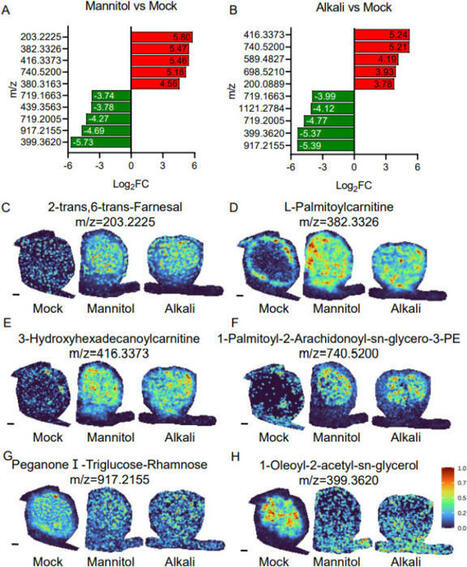
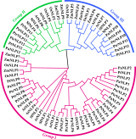
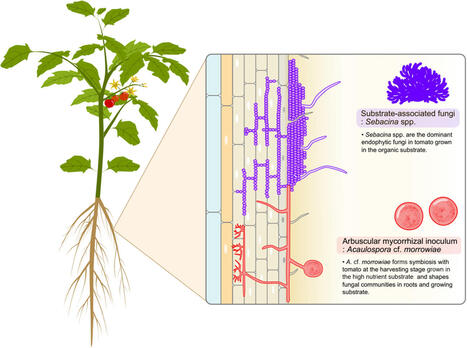


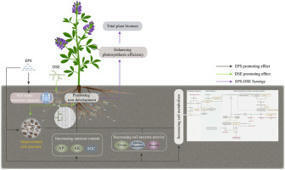

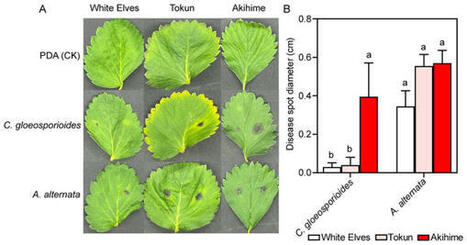

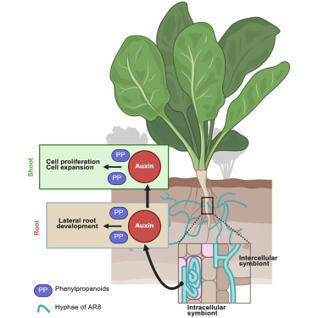
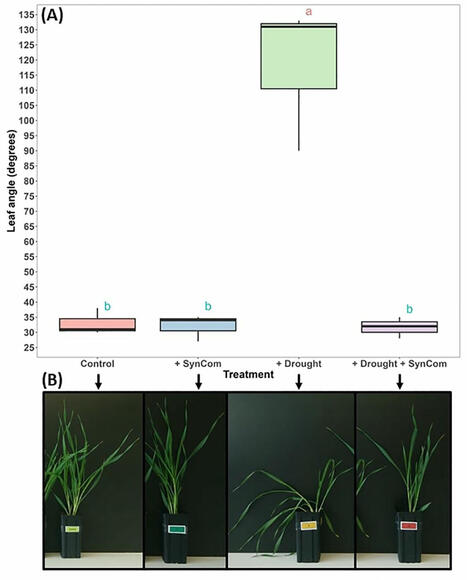
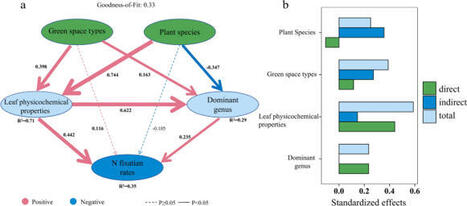
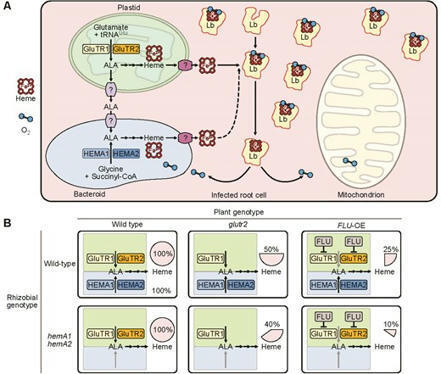






Exciting preprint from @OttLab_Freiburg and collaborators.